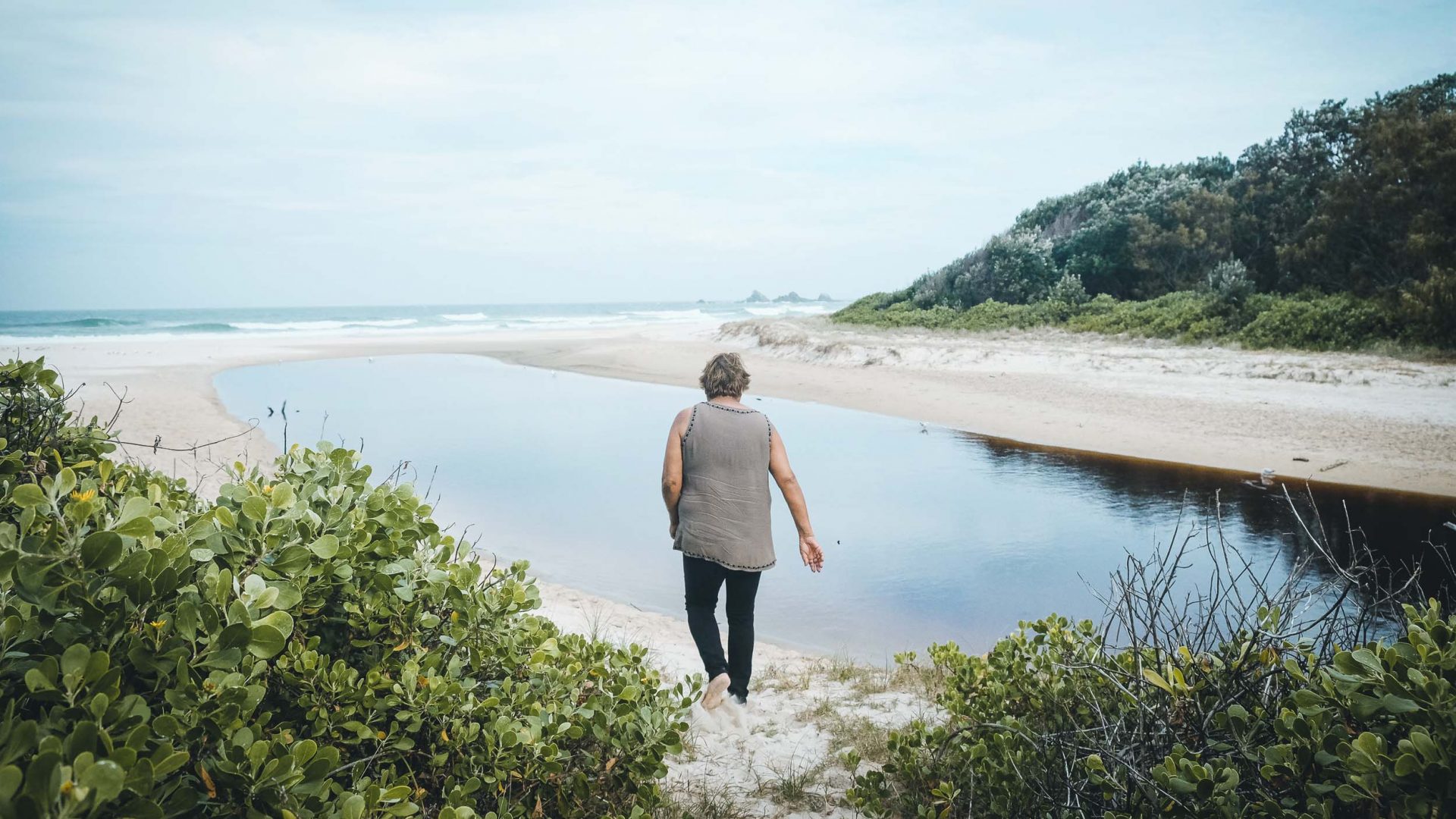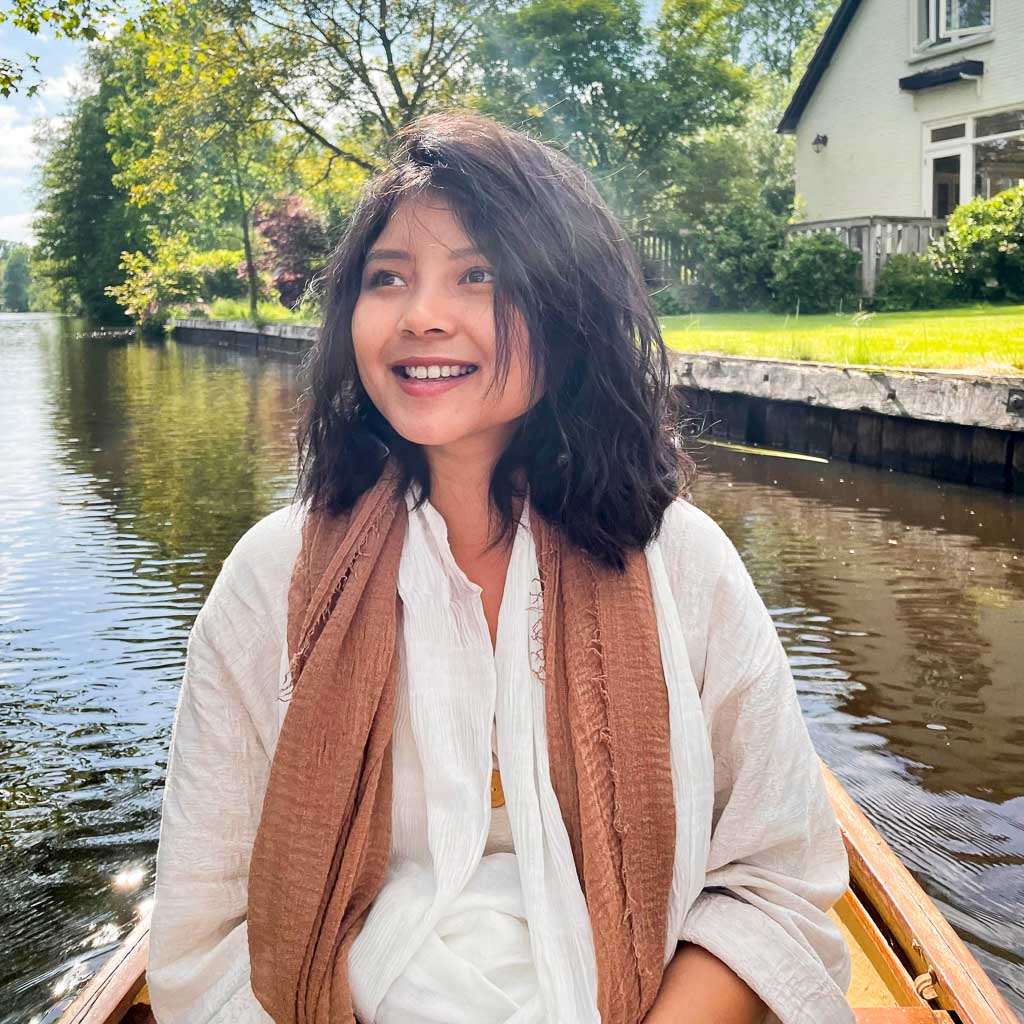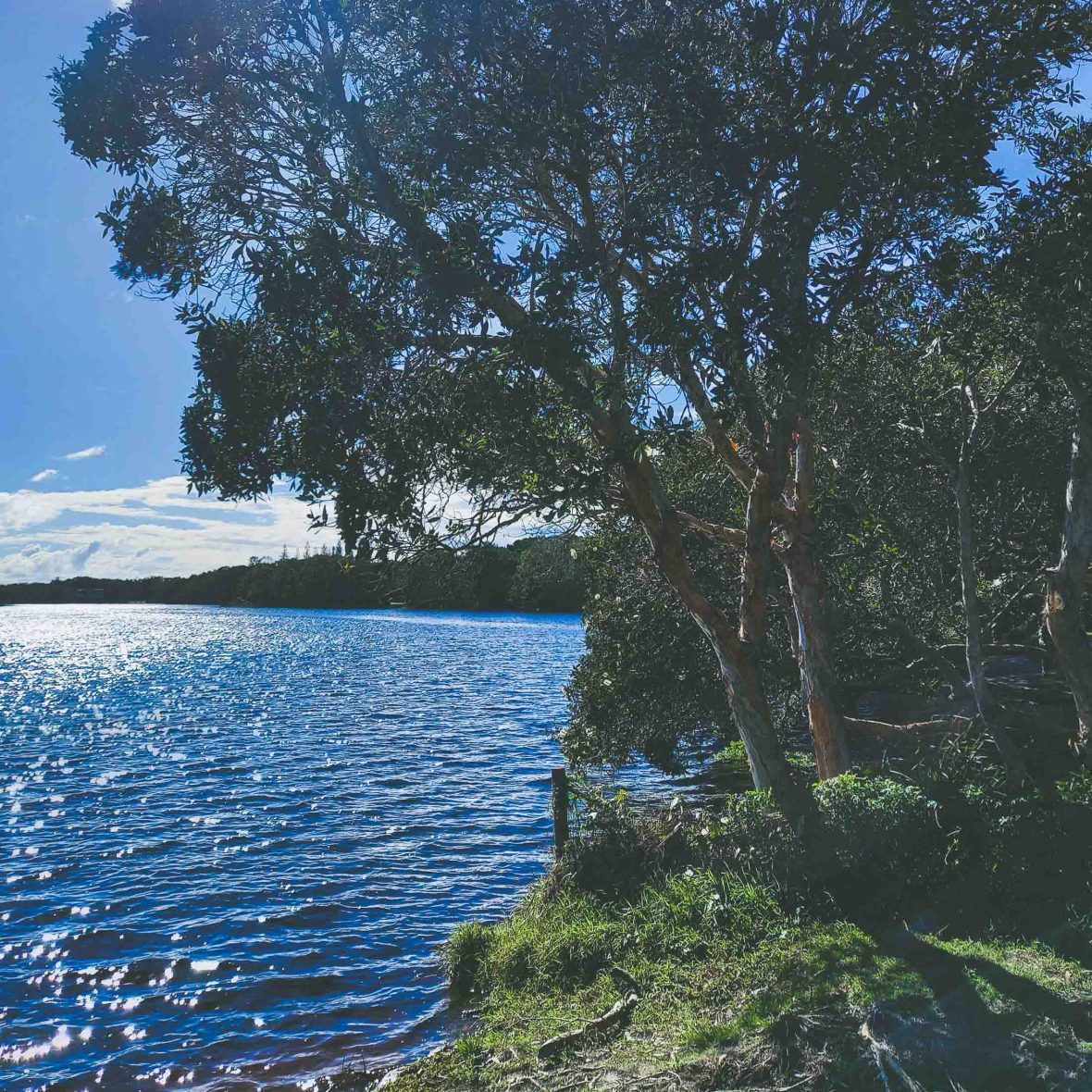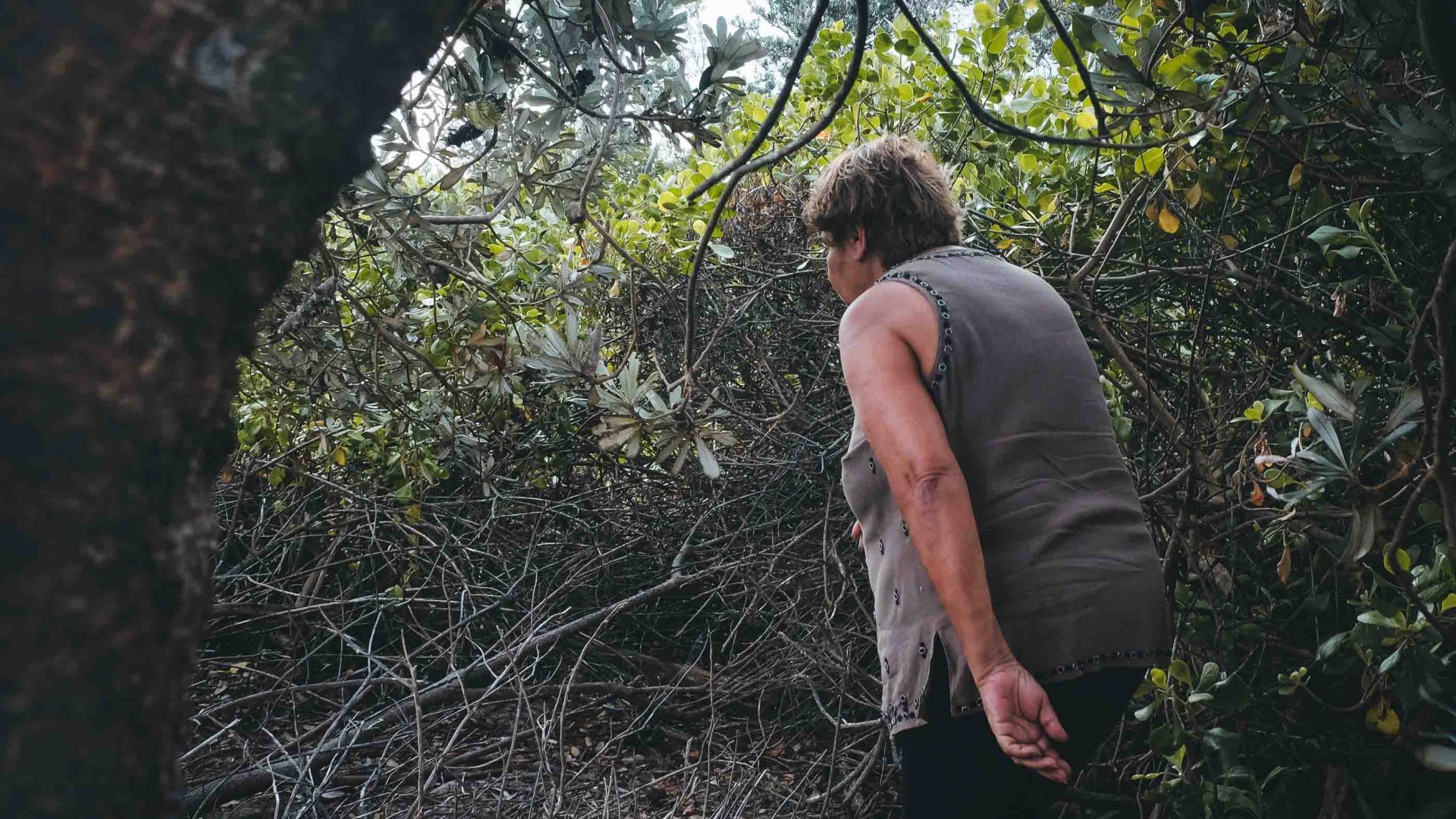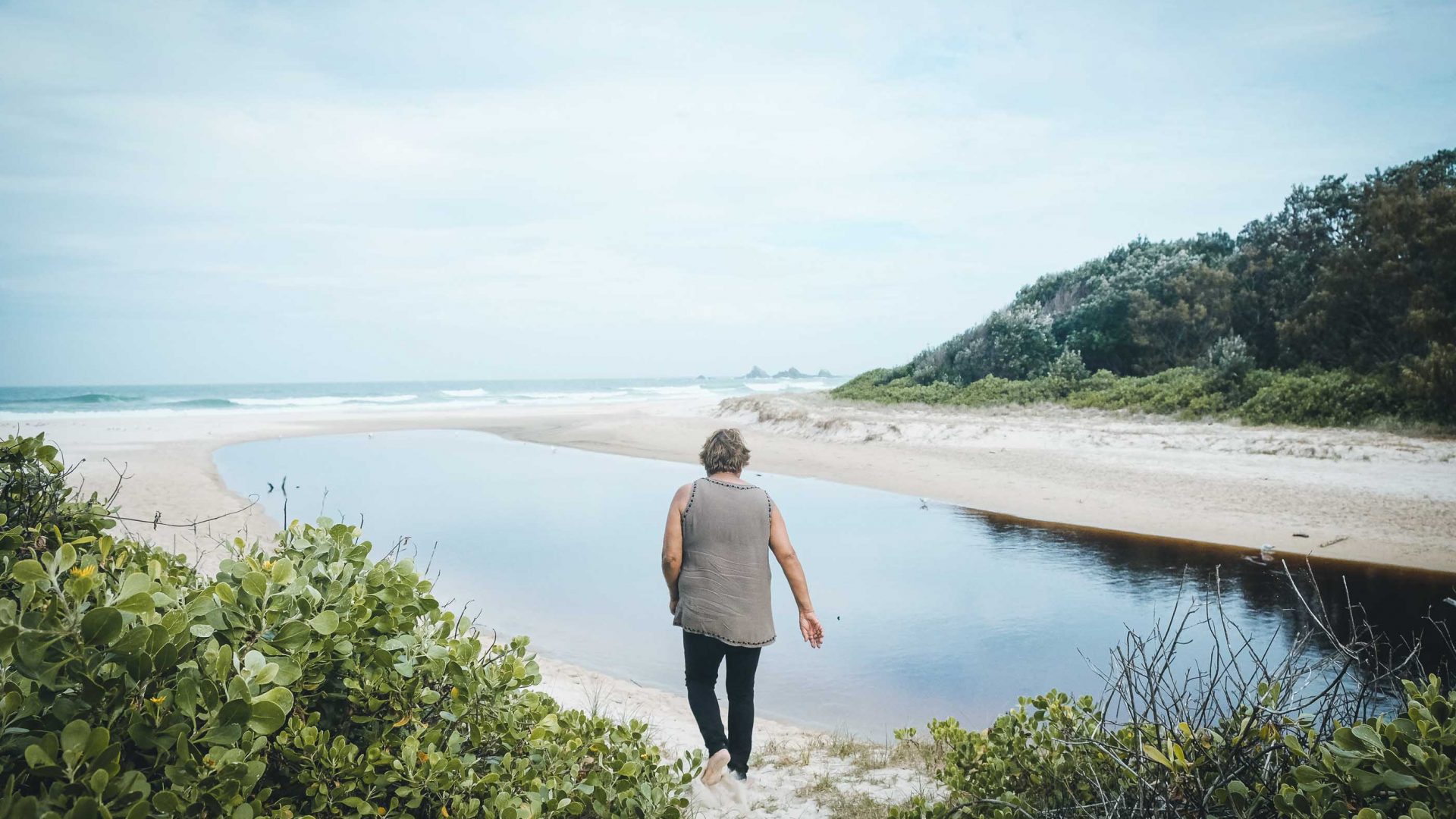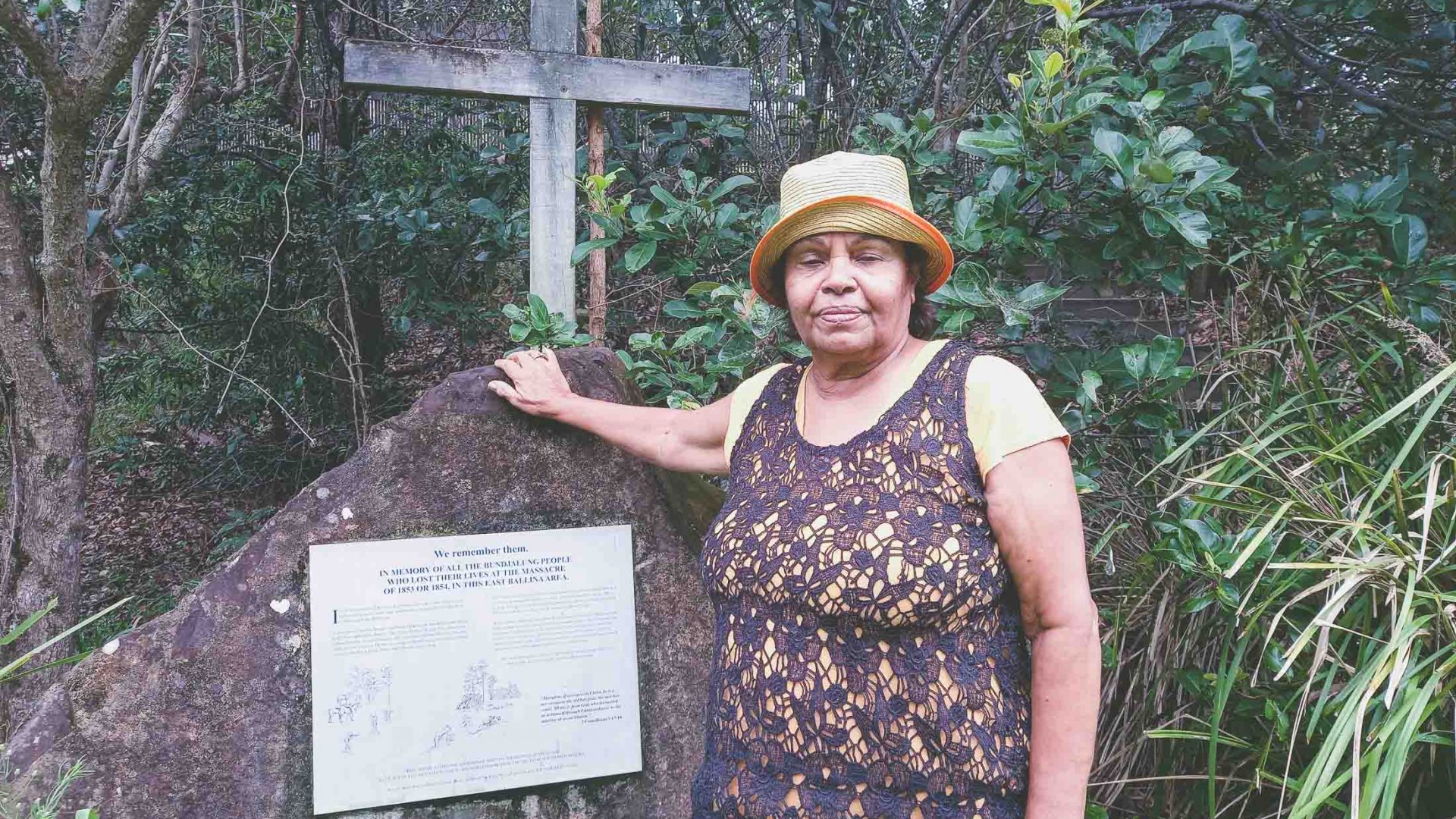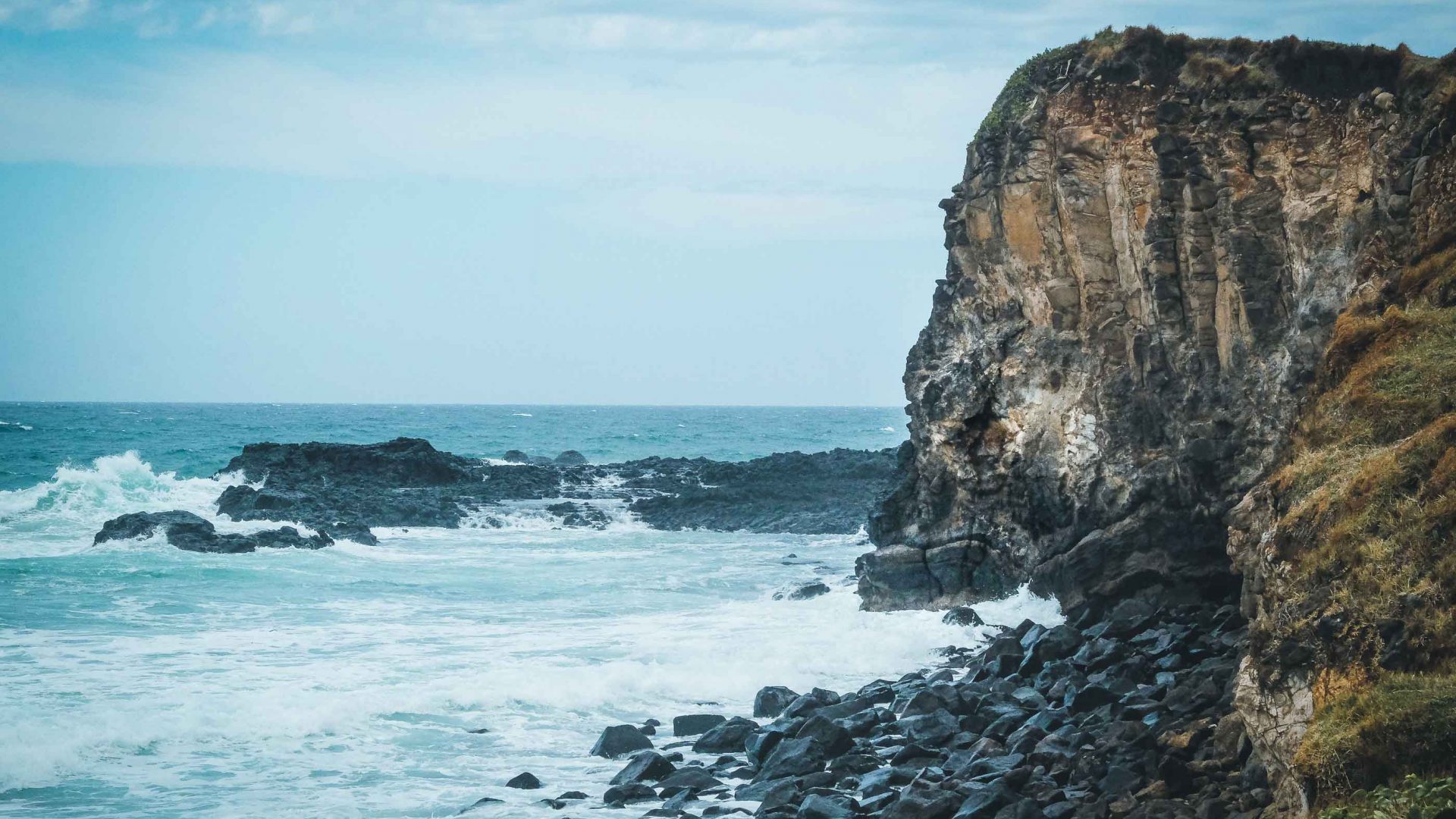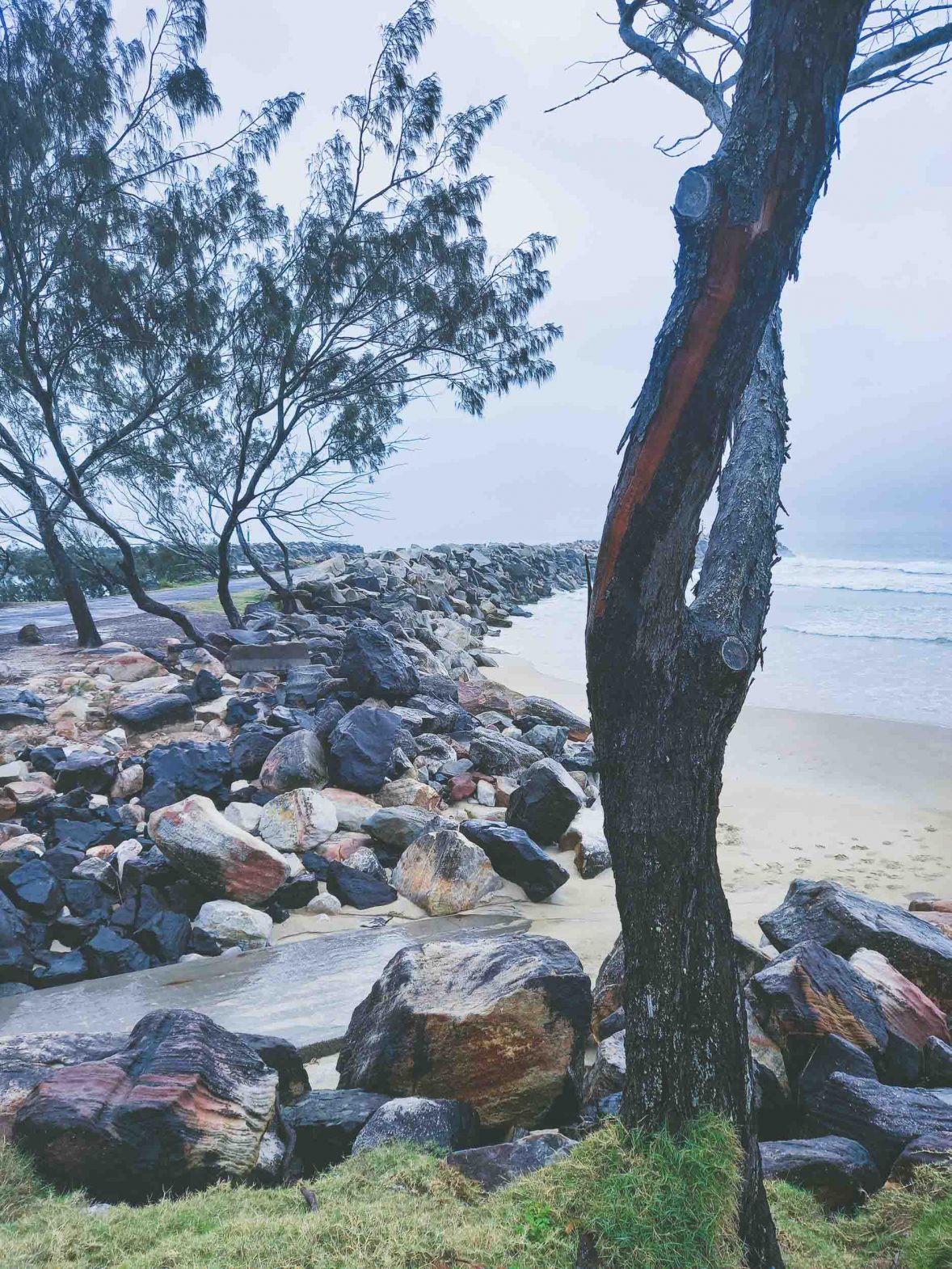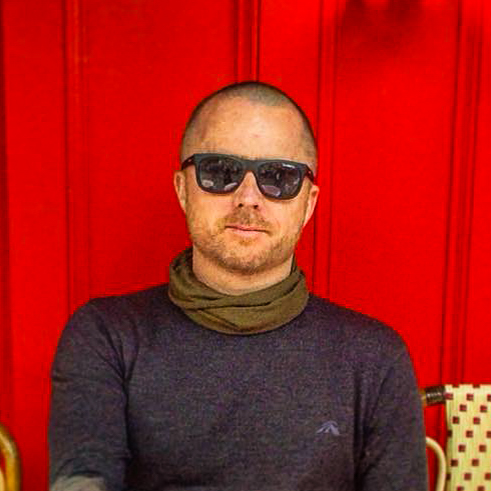Byron Bay is a mecca for haute wellness tourism, café culture and beach life, soon to feature in controversial Australian Netflix show ‘Byron Baes’. But what about its Indigenous history and culture? Thanh-Thy Tiffany Tran takes a road trip with Aunty Lois, a Nyangbul Bundjalung Elder, and finds a far more layered tale below Byron Bay’s trendy exterior.
“It’s not raining!” I beam, buckling my seatbelt. Google said it would.
Aunty Lois clutches the wheel and turns to look at me. She cracks a toothy smile: “I did a spell two days ago.” Aunty Lois comes from a line of rainmakers, she tells me.
On her Aboriginal Cultural Concepts experience, Aunty Lois will drive us through the Bundjalung Nation including the Byron Bay hinterland and Ballina coastline, uncovering sacred Indigenous Australian sites over stories passed down from her great uncle.
I’ve been here before. Yes, I find this ‘spiritual destination’ healing. Some say it’s the charged volcanic rock below. Or that Australia’s easternmost point leads to the spirit world. One new resident said, “It feels like Bali”. But for those who tended this area for thousands of years—what’s their relationship to the land?
The precious space in between: Car conversations. People say there’s something magical about this land, I tell her. What is that? Her answer feels neither romantic nor cosmic. It’s said with such matter-of-factness, a word she repeats today: “Abundance”.
Aunty Lois acknowledges the explosion of online sole-trading in recent decades: growers, crafts makers, content creators, healers. And what of this ‘Bali-like Byron’?
“It’s interesting, it’s exciting. I think Aboriginal people could also be healers,” says Aunty Lois. “But colonization makes it hard for many people to remember who they are. If they remember who they are, they can be telling their stories too. But not all of us have the capacity to remember what our old people talked about. We need access to the land for our cultural practices, but our land is being sold for astronomical prices. Inheritance was stolen off us. We didn’t have a start.”
At St. Helena Lookout, sightseers hold phone cameras over grassy slopes under a sliver of ocean horizon. Aunty Lois draws a line across the fields: “Songlines”.
“Everything we wanted was in our community,” she says. “We didn’t necessarily trade with other groups unless it was a festival time—the Songlines would be open for passage to share the abundance of our food. That would be done once a year.”
RELATED: Can Indigenous tourism help protect the Great Barrier Reef?
These ancient routes are part of an intricate network across the entire continent and were used for much more than navigating. Songlines could mirror the stars, they shaped the land, and held rich stories: sharing knowledge, rituals, ceremonies, hunting, tribe borders. Many Songlines are now Australia’s highways—until now, I had never seen our roads as sacred.
Down south at Boulder Beach, blackish basalt rocks pepper the shores. Her grandfather liked to swim here. “See that pole? So fishermen can hang onto it,” she says. “Freak wave comes in—it’s the snake bite.”
Around the headland, we find larger basalt shooting out from the shores—the goanna’s eggs—and at last, the snake, its face outlined on the cliff.
If it wasn’t for Aunty Lois, I wouldn’t have noticed the significance of what I was walking in: mystical tea tree lakes, plants for weaving, former fishing traps, remnants of a “midden” (rubbish tip) with shells, bones and tools invaluable to archaeological study, a boardwalk. I wonder whether dog-walkers know they’re passing massacre sites.
I grab my journal: everything around us carries stories, I write. Aunty Lois has generously uncovered it for me. To heal here, we should connect with the land and its people through a traditional cultural advisor. My boutique hotel feels incongruous to the last seven hours.
But this isn’t just another way to experience Byron Bay. It’s how we should be approaching all travel in Australia, and other colonized countries across the globe. To get two sides of history: guide books and Aunty Lois.
Earlier today, I asked Aunty Lois: “How do we celebrate something beautiful, while honoring its dark past?”
“I think you’re doing it,” she said. “Learning about country.”
